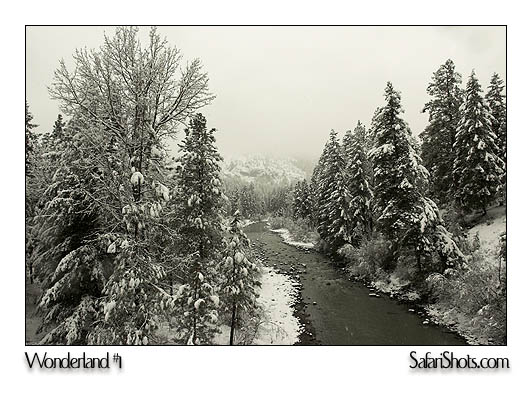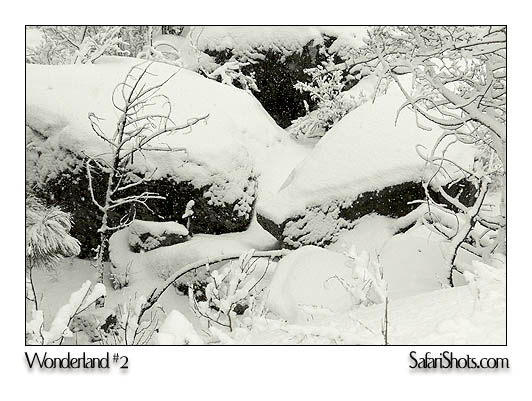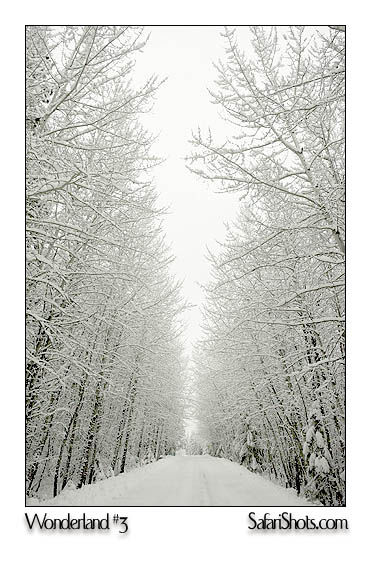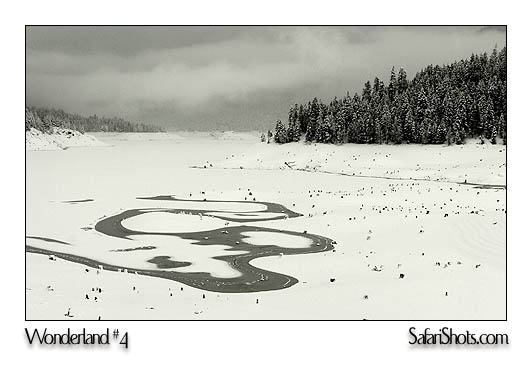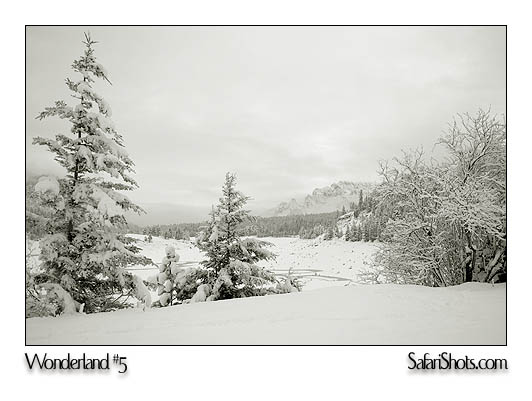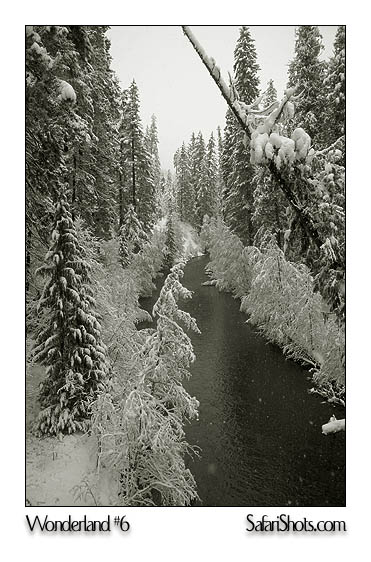|
|
|||||
|
Winter Wonderland Text and photos by Jon
Hill, December 30, 2005 All photos taken with Nikon D2H and Nikkor 17-55 DX lens. Fresh snow can truly transform landscapes. In places you wouldn't consider stopping to make a photograph in summer, you might find yourself gasping in awe at the new constrasts and stark, alien beauty before you. In summer, with clear blue skies and dark foliage, water often is a bright surface in a scene. Especially when it is rough or flowing, water will reflect the bright blue sky. But in a snowy scene as shown below, the water contrasts as a dark element. The water hasn't changed, but the scene has become much lighter with the coating of new snow.
Sometimes it's better to let instinct decide your composition. Today I was just looking throught the viewfinder and panning over the scene before me looking for some combination of shapes to jump out as a nice composition. The next shot resulted. I reviewed the shot on the camera's screen and decided to play with it a bit. The tree on the left was the element that intrigued me most, so I tried a dozen or so other compositions, all more tightly cropped than this one with the little tree as a more central element. After all that work, the shot I like best is the one I took hardly thinking about it. Now I'm looking at it trying to analyze why I like it. The symmetry of the three dark rocks gives balance to the scene that my other shots didn't have. So does the mess of branches on the right. The little tree seems to be reaching toward them... somehow they complete the scene around the tree.
In the last shot I indicated my satisfaction with symmetry in landscape photography. You've probably seen the shot below dozens of times in various forms. I certainly have, but I still couldn't resist stopping and taking the photo. The symmetry pulled me in, but so did the fact that I had been looking at evergreens for the last hour and suddenly here was a patch of road lined almost totally with deciduous trees. Such contrasts grab my attention.
The next shot shows a partially thawed stream in the bottom of a nearly dry reservoir. It's a classic "rule of thirds" landscape composition. I like the contrasts here. The white snow with the scattered black stumps. The black trees with the clumps of white snow on the branches. The dark sinuous shape of the water against the hard lines of the forest and horizon.
It took me several tries to take a shot of the scene below that I liked. My other shots were technically fine... nothing really wrong with the composition. The histogram showed a good exposure. But something was missing. I finally realized that one thing making the scene interesting were the subtle shades in the sky. To catch them, I needed to underexpose a bit. Typically with snow scenes you want to overexpose so the snow looks white, not grey. In this case though, the scene was wrecked by doing so. Photographic rules often need breaking.
And again I return to the dark water. Just imagine the scene below in summer. Dark green trees, brown dirt and bark, grey rocks, blue sky, light blue water. But today it's like a monochrome negative of that. If you live in a place where it snows, get out there the next time the white stuff is falling. You'll find a world transformed, a wonderland of photographic opportunity.
|
|||||
|
|
|||||
|
All images in this site are copyrighted. Do not copy or use without permission. |
|||||

